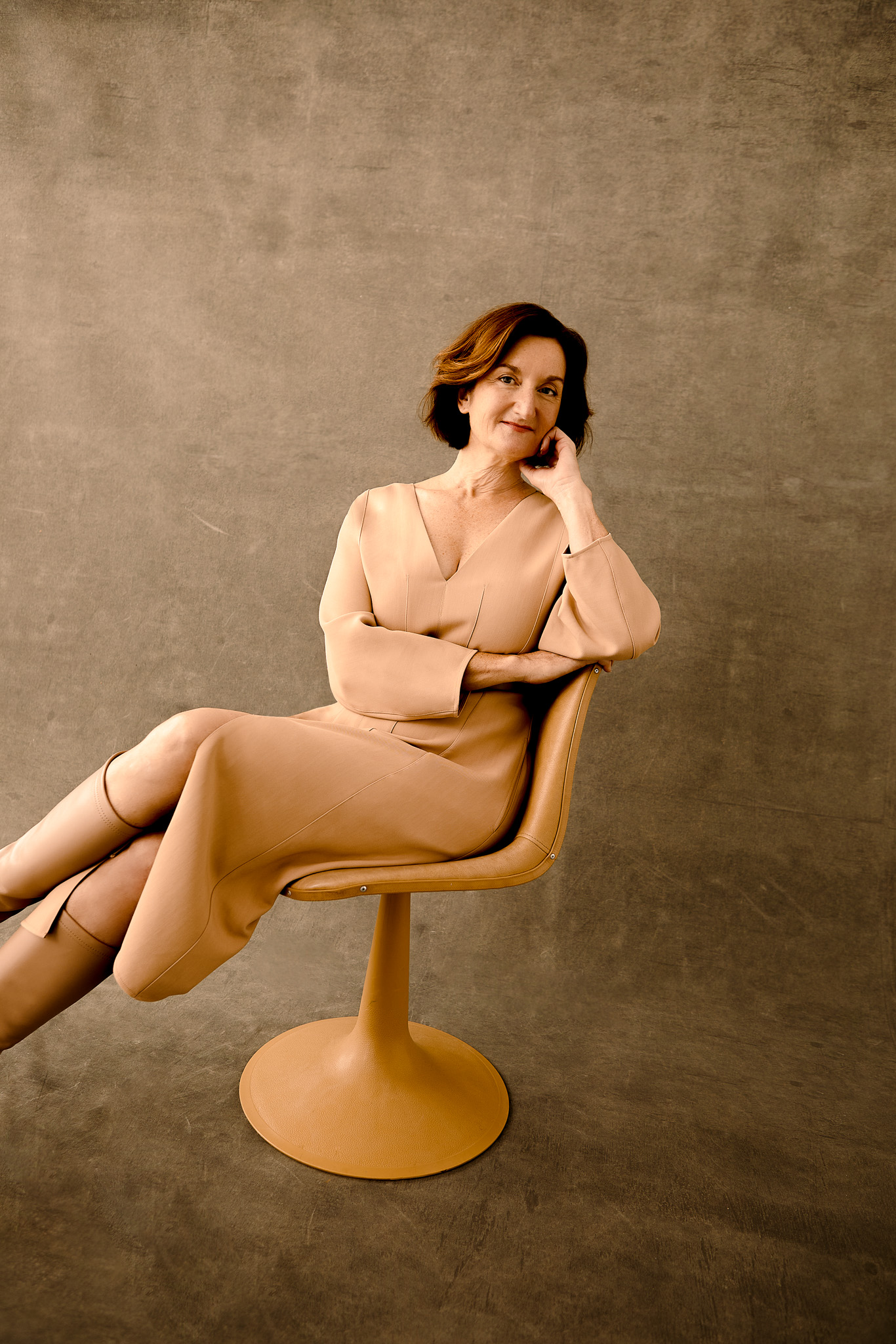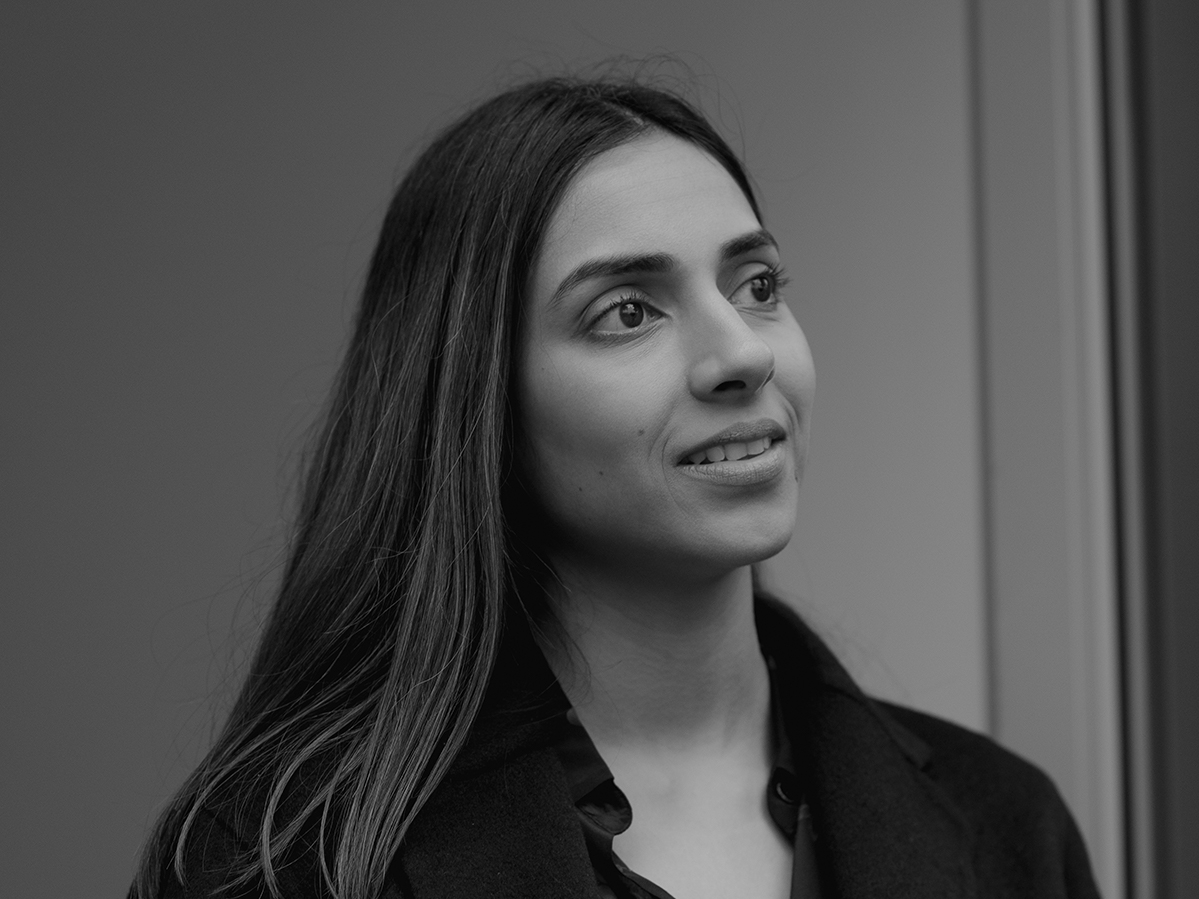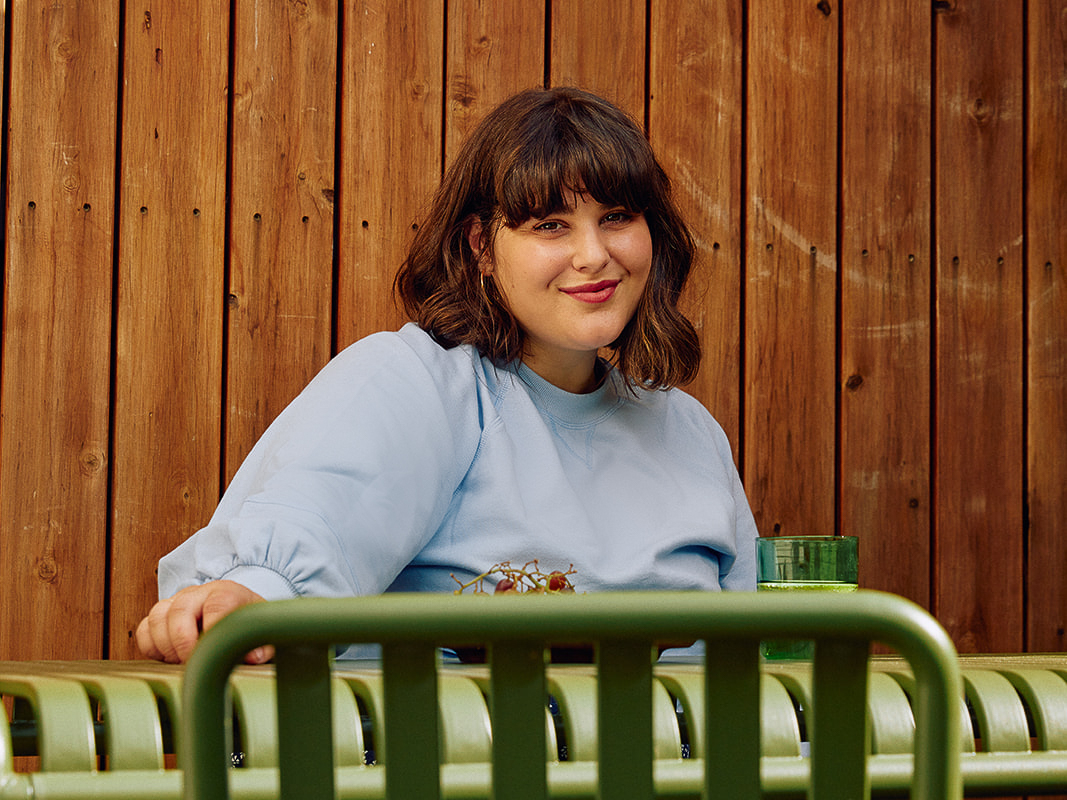U: Let’s begin with the history of Dress for Success. Since starting in 1997, the organisation has expanded to 143 cities in 23 countries and has helped more than 1.3 million people. How was the Australian branch incepted and how did it grow?
L: Globally, we have been around for 25 years, but in Australia, we started 14 years ago. Actually, Sydney was the first Dress for Success here. We have this unique situation that a lot of charities don’t have, where we’ve got global affiliates around the world that we can partner with and share ideas, but the charity is locally activated.
We have grown to be represented in all of the state cities in Australia, so each capital city has a Dress for Success representative or showroom. They are all independent charities, but we are all united together for campaigns like Empower Hour, and certainly some other initiatives that we have as well. We all work very closely together and put a united position forward. We’re essentially doing the same thing, just slightly tweaked for our markets. It works well because it enables you to express and connect with your local community at that level, but still have the resources and the strength of global positioning.
U: It makes so much sense to localise your operations when there are so many nuances in region-specific job markets. The support, professional outfitting and development tools you provide wouldn’t necessarily be applicable in the same way everywhere.
L: Definitely. There is an absolute commonality with the client needs that are coming through, but certainly, there are local nuances, so it is great to be able to tailor our service offering.
U: Where did you first come across the organisation yourself?
L: My career has always been in corporate, so I was aware of Dress for Success, but I didn’t really know that there was a lot more behind it until actually delving into it when I was looking at changing careers and moving out of the corporate sector. I was looking for a role within the for-purpose area, something that was focused around women and trying to support women.
Knowing my background—being more corporate and involved in business, from business strategy and developing teams, I was trying to find something that would fit that skill set. This role came up, and the mission of Dress for Success in trying to support women to achieve financial independence and security resonated with me.
U: It sounds like it resonated with you on both a personal and professional level.
My mum came from an era where she wasn’t working full-time or even part-time for a long period there, so was quite vulnerable when it came to her financial independence. I also have one very close friend who sadly experienced a traumatic relationship breakdown which left her quite destitute. You hear these stories, some of them are much closer to you than others, and I just thought, I’m now at a position in my career where I could actually work for an organisation that can help improve women’s lives.
"I'm now in a position in my career where I can work for an organisation that can help improve women's lives."
Leisa Sadler
"I'm now in a position in my career where I can work for an organisation that can help improve women's lives."
Leisa Sadler
U: I’m sure it’s been an interesting few years since you joined in 2020.
L: There’s been a number of challenges that I’ve been able to bring a fresh set of eyes to; certainly a different set of experiences coming from the corporate sector. I’ve been trying to look for ways to create revenue that is of a recurrent nature and work more smartly with our workforce, which is dominated by volunteers. Those kinds of nuances are quite different from what I’ve worked with before, but I’m able to bring a different perspective to the table to help find solutions in those spaces.
U: How do you distil your priorities as a charitable organisation? When there is so much positive change to achieve, where do you start?
L: It’s client-first. So your clients are at the heart and soul of everything. Then we look at how we actually deliver that service, and how that service delivery impacts our volunteers. And then how we actually fund things. We are dependent on fundraising, and we have to bring a certain amount of income through so we can pay the rent and pay the small staff that we have.
I guess, because I come from a business background, that’s kind of my first line of thought: ‘let’s make sure that we can see the woods from the trees when it comes to income.’ But I’m very much about building teams that are resourced properly and focused on the areas that they need to be focused on. In this case, working with our community means focusing on our volunteers and making sure they’re engaged and that we’ve got the right skills and the right opportunities for them to do what they do best. So in parallel, looking after the income, it’s looking after volunteers. And with that, then, again, really making sure that we’re always focused on what the evolving needs of our clients are.
U: What are those needs at the moment?
L: After coming out of the pandemic, there have been changes to the workforce that the women who use our services are encountering. We know that women have been disproportionately impacted by the pandemic and have lost work because they’re often represented in the casual workforce, or in part-time work.
We’re now seeing that they have a long way to move forward to try and make up for those losses. But we’ve also seen shifts now in childcare subsidies, and that is a really positive change. What we’ve really got to do now is ensure that women can make the most of that, and that there are opportunities in the workplace for flexible hours and opportunities for them to actually place their kids in childcare. It really is around women’s participation in the workforce that we need to see seismic change, in order for them to be able to then shift their position positively when it comes to financial independence and security, and being able to look after themselves and their families.
"It is around women's participation in the workforce that we need to see seismic change, in order for them to be able to then shift their position positively when it comes to financial independence and security, and being able to look after themselves and their families. We've got to ensure that there are the right opportunities for them."
Leisa Sadler
"It is around women's participation in the workforce that we need to see seismic change, in order for them to be able to then shift their position positively when it comes to financial independence and security, and being able to look after themselves and their families. We've got to ensure that there are the right opportunities for them."
Leisa Sadler
U: That is where your work comes in. You are equipping people with the foundational tools to ensure they can participate in the workforce. How do you approach this from a practical point of view?
L: Our professional styling service is really the cornerstone of what we do. It’s an opportunity to practically give women clothes to wear to their interview and then, when they’re successful in securing a job, they can come back and get a week’s worth of clothing. But we offer so much more—we like to say that what we do is beyond the dress.
Dressing and having a conversation with a stylist is such a wonderful experience for so many women that come through our doors. They can open up and think about what their personal brand looks like, and what they can bring to a role they’ve never really thought about themselves in—how they fit into the workforce. So having conversations with our stylists is a huge opportunity for them to start to reflect inwardly about what they can bring to a role, and in turn, will start to build their confidence.
From there, we also offer a whole suite of career support programs that aren’t obvious when you first hear about us. We have a series of workshops that we offer and a whole suite of resources that are free for our clients, including career support resources on a national digital career portal, called the Career Hub. On the platform, we have workshops that are available on demand, as well as live. Women can come to our workshops and hear experts speak about specific subjects like putting your CV together, how to position yourself for a role, what type of roles might be available in different industries. We also have topics about financial literacy and building financial skills when it comes to negotiating your pay or budgeting for when you do start to get some income coming through. So there’s a whole raft of tools there.
As well as that, we offer opportunities for one-on-one services for women to have their CV reviewed by a professional, or do mock interview workshops with a professional to help them to build up skills for that interview. And then lastly, we offer a coaching service. So when women are really struggling with difficult situations, thinking about getting back into the workforce and what they might want, we offer one-on-one coaching to support them as well.
U: Do you ever come up against people challenging the significance of presentation and dressing as the starting point in the process of supporting women in the workforce?
L: It’s a very good question actually. When I say ‘dress’, I’m kind of using it as an analogy, or probably better put the catalyst. I think what it comes down to is supporting women to feel good about themselves. I know for myself, the item that will always help me is the shoes. Everyone has their own thing; it might be the lipstick that they’re wearing, or it might be that special outfit—it could be anything that gives you that spark—but I think the important sentiment here is that you are able to feel good about yourself.
So often what we look like and how we present helps us to feel good about ourselves. When we’re providing our styling service, we don’t want everybody to leave us looking the same. It’s not like, ‘everybody needs to wear this type of suit, or this type of dress or skirt.’ It’s about having that style, that personalised appearance that you feel confident in. With that, you are able to talk about yourself and present yourself the way you want to, putting your best foot forward. We offer a very personalised service focused on building confidence and self-belief for these women.
"We don't want everybody to leave us looking the same. It's not like, 'everybody needs to wear this type of suit, or this type of dress or skirt.' It's about having that style, that personalised appearance that you feel confident in. With that, you are able to talk about yourself and present yourself the way you want to, putting your best foot forward."
Leisa Sadler
U: Where have you seen and felt the impact of the work that you and your team does most pointedly?
L: There’s been a number of experiences that I’ve been able to witness and have direct feedback from—but the thing that really stands out to me is that we’re providing this safe space for women when they come to our showroom. We want them to feel acknowledged, that they know it’s a space where they can be themselves in, and will have a real conversation that’s directed to them. When they’re there, it is all about them. That brings a smile back onto their faces. You can see it; they just feel uplifted, their shoulders come back, they almost grow a centimetre or two, metaphorically speaking.
We have women of all ages coming in, and we do have a strong representation of older women trying to rebuild themselves after they have sadly found themselves out of work. Often you’ll find that these women didn’t realise that they could present themselves in the ways they wanted, and you see that level of confidence and the resilience it gives them when they’re starting to open up to tough conversations.
It must be rewarding to see the impact of your work in motion.
It is. We profile some of these stories on our website, and each are quite different, but all representative of shared experiences. There is a woman who is a new immigrant struggling to balance her job search with being a single parent, and another who had lost her house in fires and found herself out of work. There is a lady who unfortunately, through COVID, had her business fall apart. There was a young, new immigrant to the country who was struggling to get her CV together to put herself forward, having difficulties with language, but had a professional background and was quite employable. Each of these women we helped were united in that struggle of wanting to look after themselves and their families.
I was talking to a beautiful woman, Naima this morning, who is speaking at our International Women’s Day Style Stories event. After the conversation, I was thinking about the personal impact of working with our clients. She makes me feel so much more confident in myself, through seeing her level of positivity, knowing that she’s been through everything that she has, and still able to exude this beautiful outlook on life. When you’re speaking with someone who’s so positive, I think you can start to find within yourself a refreshed level of confidence and positivity. So I’m lucky to be exposed to so many of these people.
U: How are you enabling your clients to go into new workplaces empowered and entering on equitable terms? How are you and your team thinking about DEI in the context of the modern workplace?
L: I think, really, it’s awareness. For women coming through our doors they need to be confident in putting themselves forward and they need to know what they are entitled to ask for. We so often find women—not only women in the situation that are coming through our doors—but lots of women out there apologising for their situation. For instance, to be at work early to pick up their children or to take a parent to a medical appointment, or whatever it is.
Women, more often than not, are rooted in caring activities and responsibilities. We are often apologising for the need to balance the responsibilities at work and the responsibilities in our personal lives. I’m not suggesting that there isn’t give-take in the workplace, but I think you have to be confident in being able to ask for that time, or asking for some flexibility with how the workplace is structured.
As organisations and businesses, we have to open up workplaces and we have to be able to offer parental leave, parental flexibility and flexibility for carer-givers. We have to be able to think when we’re advertising for work, or having workplace events, how that sits for people who have obligations for caring. We need to be considerate and flexible around how we structure opportunities in the workplace, for all individuals to progress, and whether we’re actually creating some barriers for a subset of some people sitting around the table.
U: Are there other barriers for workplace entry that are presenting as particularly prevalent right now?
L: We are focused at the moment around the cost of living, as it is increasing so astronomically for everyone. A lot of the women coming to see us now are underemployed (as well as unemployed), they can’t actually make ends meet. This leads to the other key focuses that we have, like reduced women’s health and wellbeing. Once people are in a situation of financial stress, that really does undermine their ability to look after themselves from a basic health and safety perspective, which then proliferates to adversely affect them in terms of how they can show up to work, or not. Unfortunately the impact on health and wellbeing is quite an intensified situation at the moment.
We are working hard to address this through our fundraising efforts, like the Empower Hour campaign that we run through the month of March to fundraise to support the services that we deliver. It’s a simple campaign—a pay-it-forward campaign where we’re asking people for an hour of their pay to support these women in need and help us to provide the services that we offer. We’re working to a national target of $250,000 that will help more than 700 women to get back into work, to thrive in their lives and be able to provide for themselves and their families.
____
This International Women’s Day, Dress for Success is asking Australians to pledge one hour of pay to to support women in need, allowing them to embark on their search for employment with the confidence, clothing, and tools to get hired. Donations can be made here.




